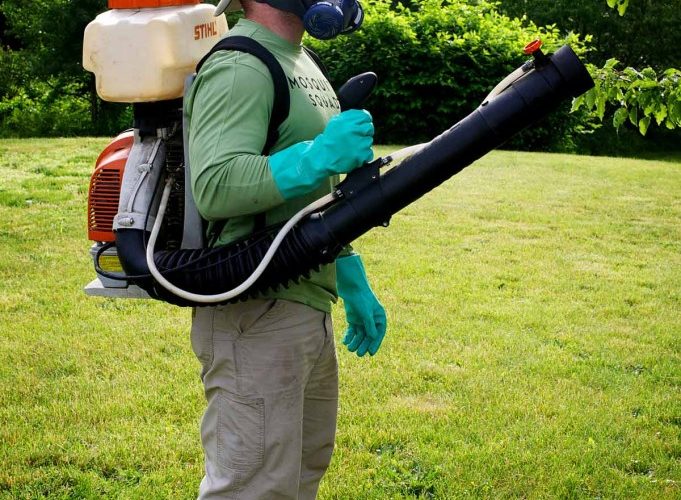A quick and dirty look at the insects that boil our blood and some methods for making them cease and desist. By Kiley Jacques // Photograph by Antohny Pira
Although there are a slew of summer-souring pests with which to contend, mosquitoes rank high among the hated—for good reason. It’s tough to stay clear of them, and they present some serious health risks. Of course, it isn’t the mosquito itself that’s the problem (though they are annoying!); it’s the fact that of the 3,000 mosquito species worldwide, a small number of them are disease vectors. Malaria, West Nile virus, heartworm (a threat to dogs), and Eastern equine encephalitis (EEEV) are chief among the dangerous microbes they transmit.
As with most insects, the mosquito life cycle plays a vital role in a good treatment plan. Knowing a bit about how they mature is important for determining when and how to combat them. “One of the most important weapons in preventing mosquitoes and mosquito-borne illness and disease is knowledge,” says Margie Pascetta of Mosquito Squad of the North Shore (north-shore.mosquitosquad.com).
There are four distinct stages of development—egg, larva, pupa, and adult. The first three stages occur in water and take up the first two weeks of the month-long life cycle; therefore, the best time to take action is when the mosquitoes are in water. Doing so also prevents future populations from getting a foothold, as adult females lay 50 to 400 eggs in standing or slow-moving water. Additionally, mosquitoes feed on nectar, plant juices, and decaying plant material, so it is wise to remove decomposing debris. It is also possible to make use of plants like lemongrass, rosemary, marigolds, mint, and catnip, which mosquitoes don’t like.
Effective treatment should be tackled from more than one angle, as mosquitoes are notoriously resilient to solitary control methods. Prevention is always a good first measure. Ridding a site of stagnant water, wearing long sleeves and pants to limit skin exposure; staying indoors during feeding times (dawn and dust); replacing regular outdoor lights with “bug” lights; and checking structural barriers for access points (gaps in walls and doors, screen holes, etc.) are a good way to diversify the prevention strategy.
When all precautions have been taken and those buggers are still bugging, it may be time to spray. The Mosquito Squad specializes in outdoor pest control and treats residential and commercial properties. Employing a chemical barrier spray (a synthetic derivative of the chrysanthemum plant), they kill adult mosquitoes on contact and leave a dried residue that remains toxic for up to 21 days; the reduction rate is 85 to 90 percent. They also offer a garlic-based, all-natural solution spray, which repels mosquitoes but doesn’t kill them. The residual effect is not as long lasting, so it needs to be reapplied every two weeks, and it results in a slightly lower—80 to 90 percent—reduction rate. Another option is a larvacide, which is a growth inhibitor left in standing water.
No matter the method, Pascetta says, “If we are diligent as homeowners [and] take control of our properties, then the incidences of mosquito-borne diseases [will] diminish.”
OTHER SOURCES Environmental Protection Agency – epa.gov/mosquitocontrol National Pesticide Information Center – npic.orst.edu/pest

